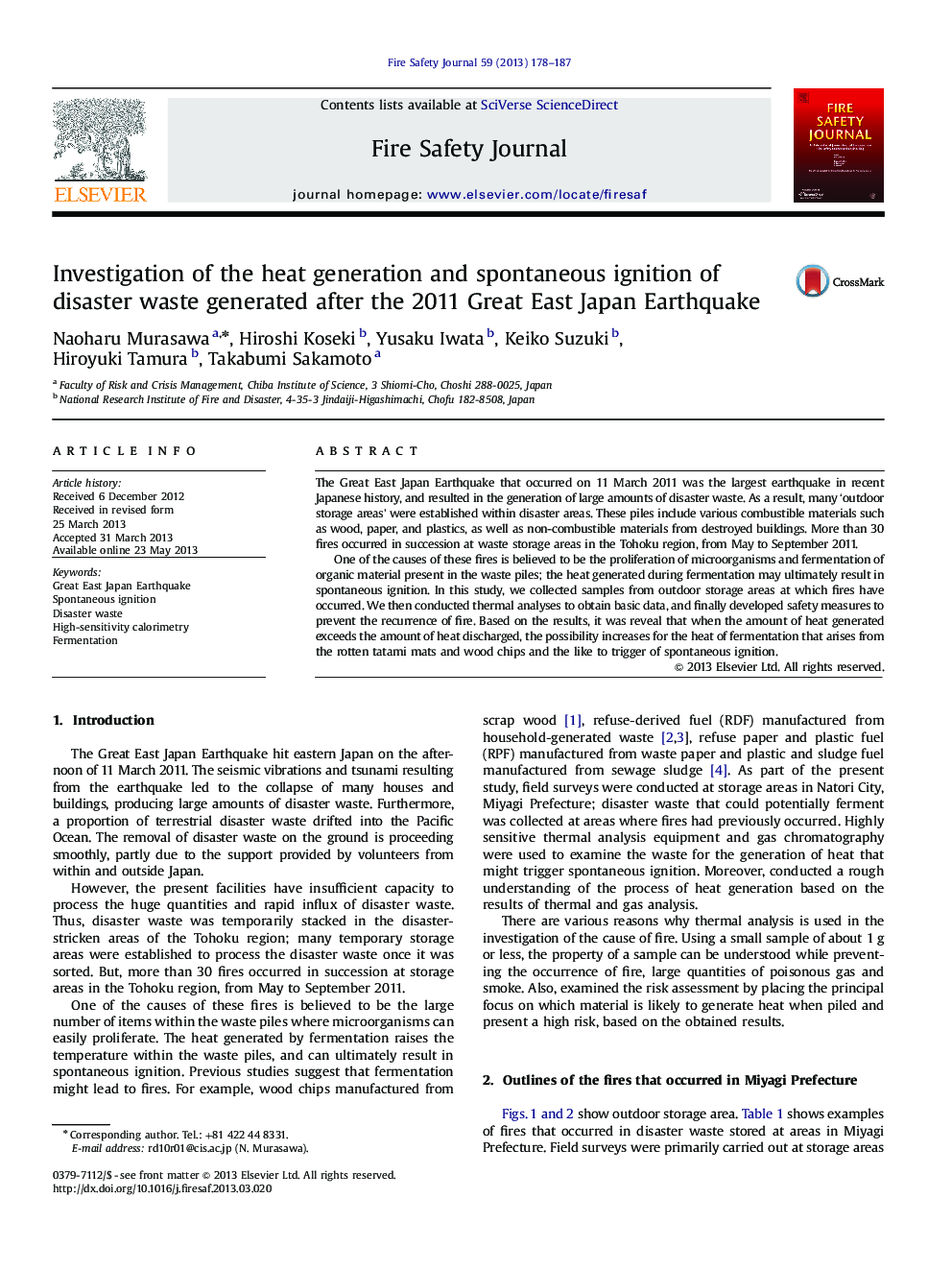| Article ID | Journal | Published Year | Pages | File Type |
|---|---|---|---|---|
| 269996 | Fire Safety Journal | 2013 | 10 Pages |
•We are pioneer researcher of the disaster waste fire generated after the Great East Japan Earthquake.•This fire is likely to continue to occur over the next 10 years in Japan.•The fact that high risk is rotten tatami has not been revealed at all until now and it is the first time we were able to make this clear.•There are not so many cases where these thermal analysis techniques are used to investigate the cause of fire in waste.
The Great East Japan Earthquake that occurred on 11 March 2011 was the largest earthquake in recent Japanese history, and resulted in the generation of large amounts of disaster waste. As a result, many ‘outdoor storage areas’ were established within disaster areas. These piles include various combustible materials such as wood, paper, and plastics, as well as non-combustible materials from destroyed buildings. More than 30 fires occurred in succession at waste storage areas in the Tohoku region, from May to September 2011.One of the causes of these fires is believed to be the proliferation of microorganisms and fermentation of organic material present in the waste piles; the heat generated during fermentation may ultimately result in spontaneous ignition. In this study, we collected samples from outdoor storage areas at which fires have occurred. We then conducted thermal analyses to obtain basic data, and finally developed safety measures to prevent the recurrence of fire. Based on the results, it was reveal that when the amount of heat generated exceeds the amount of heat discharged, the possibility increases for the heat of fermentation that arises from the rotten tatami mats and wood chips and the like to trigger of spontaneous ignition.
